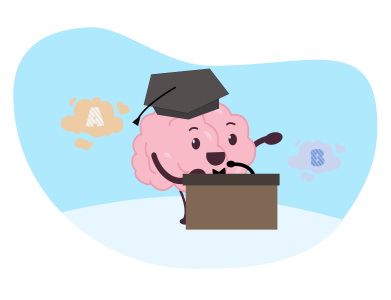“Child development” refers to how a child changes and grows from birth to age 18, and specialists have identified five main stages of development during this time. Medical professionals place increasing expectations on children as they age in order for them to attain certain developmental milestones. For effective therapy, it is necessary to first determine the cause of any holdups.
Transformation always occurs. From the moment of our birth until the moment of our death, human beings are in a state of continuous development. How and why people evolve throughout their lives is a major question for psychologists. Many of these shifts are inevitable, but they can also present difficulties that certain people may need additional support to overcome.
Experts can better anticipate difficulties and effectively engage for optimal results by following the principles of normative development. Developmental psychologists can help people of all ages, but some choose to focus on working with a specific age range, such as children, adults, or the elderly.
What is a Developmental Milestone?
Milestones in development are observable behaviors that occur naturally at predictable intervals during childhood and adolescence. Childhood development varies greatly from child to child. Although no two children are exactly alike, most achieve certain developmental markers at approximately the same time.
Some of the things babies learn and do in their first year of life are:
- Purposefully flashing a smile.
- having nothing to hold up when sitting.
- Moving things from one hand to another
- Shifting from a crawl to a walk.
- Waving goodbye.
Some of the things a child learns and does as they mature are:
- Recognizing faces and identifying body parts by name.
- Using phrases of only two to four words.
- Categorizing shapes and colors.
- Singing or reciting a well-known song or poem from memory.
- Telling stories.
Child Development Stages
Medical professionals divide child development stages into five phases:
Birth to 18 months: The first 18 months of a child’s life are crucial for the development of skills such as social recognition, fundamental motor control, and emotional understanding. They might also start to walk and talk independently at this point.
18 months to 3 years: Children between the ages of 18 months and 3 years old often begin to engage in make-believe play, engage in group activities, and comprehend and follow two-step instructions. They might make references to common people or activities, such as playing with balls or running.
3 to 5 years: Children between the ages of three and five typically begin to express preferences, learn to count to ten, and recognize basic color patterns. They could be able to play alone on the playground, repeat nursery rhymes, and even know their own name.
5 to 12 years: Between the ages of 5 and 12, children attend elementary school, where they develop their ability to think critically and their sense of self-worth. They might make some good friends, learn something new, and perhaps improve their reading skills.
12 to 18 years: In this last part of the child development stages, teenagers experience a period of growing independence. They start thinking for themselves, hit puberty, and start to explore romantic relationships and sexuality.
How to assess your Child’s Development?

Professionals may utilize checklists to track their kids’ growth. Each child develops at their own pace, however, checklists can serve as a general indicator of a healthy trajectory.
Child development checklists are not intended to be used as diagnostic tools. Instead, this information should serve as a warning sign that it’s time to consult a medical professional if your child has not reached a particular developmental milestone. You might gain greater insight into your child’s unique development from an expert.
The Signs of Developmental Delays
The symptoms of delayed development can range widely. The early stages of development are not always the best indicator of a child’s future success. Alternatively, a child may not exhibit any symptoms until they start school.
Common symptoms of developmental delays include:
- Babies that are late to roll over, crawl, or walk
- Inability to communicate effectively verbally or socially.
- Difficulty keeping in mind what to do next.
- Difficulties acquiring knowledge academically.
- Difficulties in establishing cause-and-effect relationships
- Inability to perform daily tasks without help, such as getting dressed or using the bathroom.
What Causes Developmental Delays?
There is often no explanation for developmental delays. However, some developmental delays have a genetic basis, such as in the cases of Down syndrome, fragile X syndrome, and Angelman syndrome.
Some children are more likely to experience delays in development than others due to factors like:
- Prenatal exposure to harmful substances, such as alcohol or lead poisoning
- Premature delivery due to low birth weight
- Premature birth.
- Abuse and other forms of severe trauma.
What should you do if you see indicators of a developmental delay?
Contact your child’s pediatrician if you observe any indicators of delayed development. A pediatrician could suggest scheduling a developmental screening. Experts like:
- Child psychologist.
- A developmental pediatrician
- Neurologist.
- Occupational therapist.
- Speech-language pathologist.
- Physical therapist.
Playtime observations, structured tests, and surveys of both the child and their parents could all be part of an evaluation. The outcomes will help identify whether your child requires further support services.
Treatment Options for Developmental Delays
Delays in development currently have no known treatment. However, therapies may be able to assist your kid in performing better or keeping up with his or her friends. Examples of possible therapeutic approaches are:
- Occupational therapy teaches people how to do everyday tasks without much help, which helps them improve their fine motor skills and become more independent.
- Assistive learning and social skills programs for students with special needs
- Physical therapy is for children who are developing slowly in terms of their gross motor abilities, such as those who have experienced a physical change that affects the way they walk.
- Treatment for difficulty producing or comprehending spoken language is provided by speech and language therapists.
- Child behavior therapy is for those who struggle to control their actions at home or in public.
The Significance of Developmental Screenings
Developmental delay affects about one in six children in the United States. Early detection of developmental delays allows for the implementation of treatment plans. Your child’s academic performance, social interactions, and language development will all benefit from these treatments.
In Conclusion
The term “child development” is used to describe the various skills and abilities that are considered necessary for a child’s healthy growth and development. Physical growth and the development of the child’s social, emotional, and cognitive abilities are all part of these stages. Pediatricians can diagnose developmental delays by looking for signs that a child is not progressing normally. There is currently no treatment that will cure developmental delays; however, therapy can help your kid catch up and even thrive.
Hearing that your child has been diagnosed with a developmental disorder can be surprising and worrisome. If you or a loved one has been given a diagnosis of a developmental disorder, it’s important to take some time to educate yourself on the condition and the options for therapy.
You should also make an appointment with your doctor, a developmental psychologist, and any other healthcare providers who may be a part of your treatment team to discuss your concerns and ask any questions you may have. You’ll be more prepared for the next stages of treatment if you take an active role in the process, and you’ll learn more about what’s going on along the way, too.







